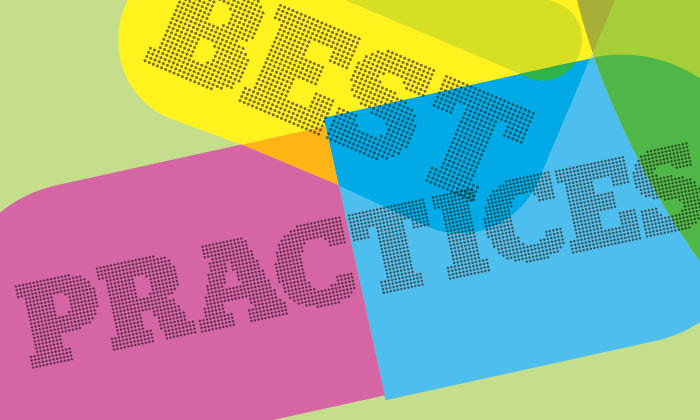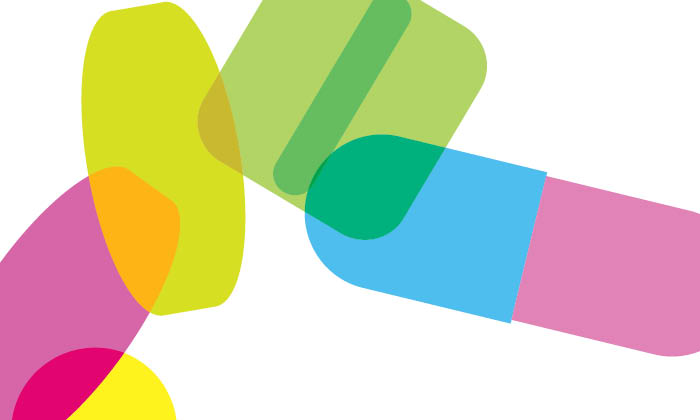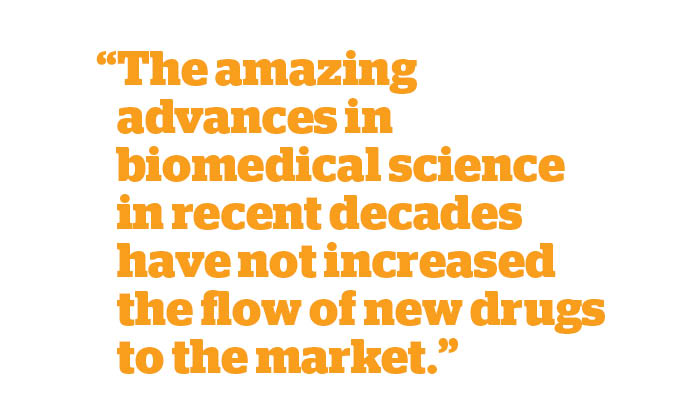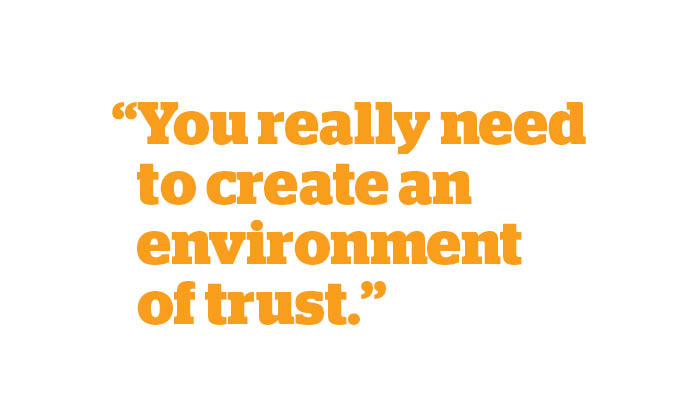
The statistic that best summarizes why business and health care must join forces may be this one: The United States spends more on health care by far than any other country, but ranks 42nd in global life expectancy. As health care spending has ramped up to an annual $3 trillion — the fastest rise in any sector of the U.S. economy — Americans have not benefited in line with that investment. Culprits include a host of inefficiencies, among them, a fragmented care system; electronic health records that can’t talk across systems; poor communication among the many stakeholders; and incentives that are often misaligned for patients, providers and payers.  Cue the business acumen. Experts in economics, finance, consumer experience and information technology bring critical knowledge of reducing cost and waste, making use of electronic data, and improving systems efficiency. As health care entrepreneur Leonard D’Avolio ’98, MSIT ’01 puts it: “The medical research world is great at discovery. What it’s not as good at is industrialization or scaling.” Now, as the health care system moves from a fee-for-service model to one built on value of care, the industry will need to draw on expertise in creating and leading teams — another strength of the business world.
Cue the business acumen. Experts in economics, finance, consumer experience and information technology bring critical knowledge of reducing cost and waste, making use of electronic data, and improving systems efficiency. As health care entrepreneur Leonard D’Avolio ’98, MSIT ’01 puts it: “The medical research world is great at discovery. What it’s not as good at is industrialization or scaling.” Now, as the health care system moves from a fee-for-service model to one built on value of care, the industry will need to draw on expertise in creating and leading teams — another strength of the business world.
BREAKING DOWN BARRIERS
Academia is recognizing the need for partnership. Consider the growing number of joint MD/MBA programs, which doubled from 33 in 2009 to 65 this year, according to the national association that tracks such programs.
The interplay of medicine and business already engages a healthy swath of Bentley faculty and alumni. The work takes aim at longstanding barriers between academia, clinical health care and industry. Each sector has a role in making sure that research findings find their way into meaningful applications.
The Bentley Research Colloquium for 2016 highlighted scholarship underway to address inefficiencies, improve communication among different stakeholders, and navigate issues such as privacy that are common to medicine and business.
“Our faculty and PhD students are doing exciting work across the divide and we wanted to showcase that,” says Marcia Millon Cornett, professor of finance and chair of the Bentley Research Council, which sponsors the annual colloquium.
COUNTING ON BIG DATA
Among the research topics at the colloquium: how big data, now widely available through registries and electronic health records (EHRs), can help answer health care questions and inform strategies for cutting costs and improving health outcomes.
Professor of Economics Dhaval Dave, for example, used a database of more than 91 million U.S. births to examine an aspect of raising the minimum wage that falls outside labor market concerns.
“Usually these discussions center on productivity and income,” he explains. “No one had looked at how it directly affects health.”
He collected data on every infant born in the States since 1988 and identified which mothers were likely to be affected by minimum wage policies, based on their area of residence. Dave’s analysis showed that a higher minimum wage improves birth weight, increases gestational age and decreases the incidence of prematurity.
Big data may also help accelerate the discovery and development of new drugs. “The amazing advances in biomedical science in recent decades have not increased the flow of new drugs to the market,” says Fred Ledley, who holds appointments in two academic departments: Natural and Applied Sciences and Management. He also directs the Center for Integration of Science and Industry (CISI) at Bentley.
“The amazing advances in biomedical science in recent decades have not increased the flow of new drugs to the market,” says Fred Ledley, who holds appointments in two academic departments: Natural and Applied Sciences and Management. He also directs the Center for Integration of Science and Industry (CISI) at Bentley.
Ledley points to relevant work underway in CISI. Researchers and students are studying patterns of innovation in the biopharmaceutical industry. The models they are building could eventually be used to improve the efficiency of drug development.
Health care entrepreneur D’Avolio notes that the math and computational power that enables business forecasting has been around for a long time. Applying the principles to health care takes focusing on a specific problem, he says.
The company he founded — Cyft, in Cambridge, Mass. — develops predictive models for health care. One client organization, for example, wants to be able to anticipate which patients with diabetes and heart disease and lung disease are most likely to seek emergency care.
“We’re making it possible for health care organizations to quickly pull in all of the raw data, and turn it into the rank-ordered list of exactly which patients are likely to end up in the ER in the very near future,” explains D’Avolio. “Clinicians can take that information and, for the first time, health care becomes proactive versus reactive.”
SEEING PAST THE TECHNOLOGY
The forward march of technology to improve health care practice and decision-making can falter without accounting for the different people who will use the new tools.
According to Bentley researchers who study systems and information, flexible health systems that consider a wide spectrum of users — from hospital management to doctors to nurses to patients — are most likely to deliver higher productivity, increased buy-in and other positive results. But as systems such as electronic health records and telemedicine change how people work, emotions can run high and reactions can vary by health care role.
David Murungi and Marco Marabelli, both assistant professors of information and process management at Bentley, examined those roles and reactions as two groups of hospitals implemented new information systems. Their analysis of productive conversation and arguments shows how emotional responses are negotiated. Underestimating emotional aspects associated with adopting technology, they found, might prevent successful implementations.
MATTERS OF TRUST
Mary Beth Dynan, MSCIS ’92 has seen emotions roil as clinical operations manager for Partners eCare at Boston-based Brigham and Women’s Faulkner Hospital. The hospital is completing its installation of an EHR system; she was brought in specifically for the project.
"When I was introduced, I had people who were very excited about the project,” says Dynan. “But I also had multiple people telling me, ‘I will retire before I use that system.’ I had physicians who said, ‘I’ll never touch that system. The residents will do all my work.’ People put a wall up before anything had been rolled out.”
The first step to negotiating those emotions and fears was recognizing where people were starting from. Some nurses, for instance, not only had never used an EHR, but had not used a computer in their job. They needed practice in sending an email or creating a document.
Physicians, meanwhile, were used to having someone else input information. The new system required their direct participation. Recognizing that physicians’ most important role is providing care, the implementation team made sure there were dictation tools and shortcuts such as smart text to reduce the number of keystrokes. Training also included how to use an EHR without turning your back on the patient in the room.
In the end, says Dynan, providers do realize what is newly possible with the systems. For instance, even if a patient tells just one doctor about a medication allergy, the information will be in the record and accessible by others.
“The first eight or nine months, we got a lot of people being uncomfortable with the system,” she says. “Then they started appreciating what they can see.”
Telemedicine systems, too, prompt different reactions among doctors, nurses and patients that affect their use of the technology. Trust is a major factor.
Research by Monica Garfield of the Computer Information Systems Department and Janis Gogan of Information and Process Management examines how users develop trust in systems, how it changes with use, and how interpersonal trust and system trust affect each another. “You really need to create an environment of trust,” says Garfield, “so people want to use the system in the first place.
“You really need to create an environment of trust,” says Garfield, “so people want to use the system in the first place.
Visual contact is a key — an important finding since telemedicine can be conducted via phone. Being able to see the patient and the care team or the person to whom information will be sent builds more trust in the system.
PRIVACY AND SECURITY
Perceptions of privacy shape the meaning of information security, that is, how information is recorded and used across the technology we turn to daily.
A study by Bentley’s Mystica Alexander (Law, Taxation and Financial Planning), Patrick Scholten (Economics) and David Yates (Computer Information Systems) with Cheryl Kirschner of Babson College notes that the Health Insurance Portability and Accountability Act (HIPAA) covers many aspects of health care communication. The coverage does not extend to health-related Internet searches, where data aggregators can use different tracking technologies to collect sensitive information about health and other matters. These technologies, which were originally designed to facilitate communication between website and computer, enable data aggregators to track browsing histories and — potentially — to build individual profiles and target advertising. The research cites the lack of federal law that protects the tracking, collection or use of this data.
Alexander’s research team proposes to study how data aggregators collect information and use it to direct advertising content to specific users. They point out that 75 percent of the world’s 500 most popular websites use tracking mechanisms. Potential abuses of the information include price discrimination: the act of charging different prices for an identical item or service based on a user’s search history and other identifiable information.
The researchers argue that “at a minimum, the legal framework needs to catch up to the ever-evolving technology-based economy to protect individual privacy.”
Liz Brown, assistant professor of law, taxation and financial planning, studies privacy losses related to one of the corporate world’s most progressive benefits: workplace wellness programs. She examines whether the trade-off of privacy is worth any benefit for employees and whether some low-income employees feel financial pressure to participate.
“These programs are technically required to be voluntary,” writes Brown. “They may not be voluntary in practice when there is a significant cost associated with nonparticipation.”
She notes potential downsides if employees refuse to provide personal data, including “potentially harmful, yet legal, consequences.”
NEW ROUTES TO DRIVE DOWN COSTS
Other research explores innovative ways to cut costs. Typically, when analysts look at how systems improve business, the scope narrows to designers and users. But where health care is concerned, Bentley researchers have discovered a broad range of stakeholders; each may have very different ideas about what constitutes success.
Deborah Gregory, assistant professor of finance, looks at cost control through the lens of improving task flow in the operating room (OR). Using assets already in place (both capital assets and labor) to generate more cash flow is critical for hospitals under increasing pressure to reduce costs.
She notes the complex interactions that must be considered in changes to the OR routine. For instance, surgeons are concerned with on-time starts, anesthesiologists want to reduce downtime, and nurses would like flexibility to delay or accelerate cases based on the patient’s condition. These different goals call for designing OR routines that have the least negative impact on all stakeholders, while improving accounting and financial models for the hospital.
Another potential avenue for cost savings emerged from research that analyzed the efficacy of older drugs to treat bipolar disorder compared with second-generation antipsychotics (SGAs). Older drugs are often off patent, with generic versions that are less expensive. Numerous anti-manic treatments have been introduced over the past two decades, but their advantages over older treatments were unclear.
Colloquium presenter Mingfei Li, associate professor of mathematical sciences, shared research that used a historical cohort design. She and colleagues looked at more than 27,000 outpatients with bipolar disorder treated in the Veterans Affairs system between 2003 and 2010. People started on lithium or valproate alone, compared with those beginning with a much more expensive SGA alone, were significantly less likely to be hospitalized in the next year. The researchers say that randomized, controlled trials should follow.
The costs of drugs and services are a major red flag for Francis Melaragni ’84, who directs Pharmaceutical and Health Care Business Programs at MCPHS University in Boston. He blames the inability of the U.S. government to negotiate for lower drug prices for a large share of the country’s health care problems.
“We’re in a crisis situation,” he says. “This is going to make the U.S. less competitive in the world market and bankrupt, eventually. And we’re not talking decades away.”
Melaragni tells his students they are entering the workforce at a time when health care is broken; their opportunity is to find solutions that help fix the system. Transparency about prices will be crucial, he says. Today’s consumers have no idea what health care services cost or what they will be expected to pay. “Would you go into any store or restaurant without knowing the prices?”
Transparency about prices will be crucial, he says. Today’s consumers have no idea what health care services cost or what they will be expected to pay. “Would you go into any store or restaurant without knowing the prices?”
The knowledge should give patients and employers incentives to choose lower-cost options.
“We also need to open up health care borders to global competition,” Melaragni adds, noting that other countries and territories have learned to do common procedures for much less money.
He points to the example of Health City, a high-tech hospital in the Cayman Islands. According to HealthCatalyst, a company that gathers and analyzes health-related data, the hospital performs heart surgery for less than U.S. $1,400 — about 2 percent of the procedure’s cost in the United States.
PATIENTS AND CONSUMERS
Underlying transformation of the health care system is a fundamental change in the patient role.
“Health care is shifting to a model where patients are encouraged to act more like consumers,” says Danielle Hartigan, assistant professor of natural and applied sciences. Better communication is a big part of that dynamic.
Some of her communication-based research focuses on the ability of physicians and nurses to estimate patients’ pain. She and colleagues found a large underestimation of patients’ pain on the part of care providers and a large overestimation by families and caregivers. The findings have implications for educational needs, she says. “We might want to better train providers to assess verbal and non-verbal cues for patient pain.” Health care executive Karl Wagner ’87 says that treating patients as consumers is particularly relevant because they have increasing choices in selecting providers.
Health care executive Karl Wagner ’87 says that treating patients as consumers is particularly relevant because they have increasing choices in selecting providers.
“Consumers are going to be selecting providers based on cost and quality,” he says. “Part of that quality will be how providers interact with patients as health care moves to a value-based system.”
Wagner is president of the eastern division of Mednax, in Weston, Fla., which provides subspecialty physician services. The company has many programs in place that follow up with the patient, just as consumers might get a post-purchase call for a service or product. For example, outreach to families of children with hearing deficits tries to make sure they’ve seen an audiologist as recommended after the screening.
“Better outcomes are a result of strong patient physician relationships,” Wagner says. “If patients are on board with what they need to do and they participate in their care, they’re going to be more successful. And if there’s poor communication, you’re going to have missteps and poor hand-offs and poor understanding.”

